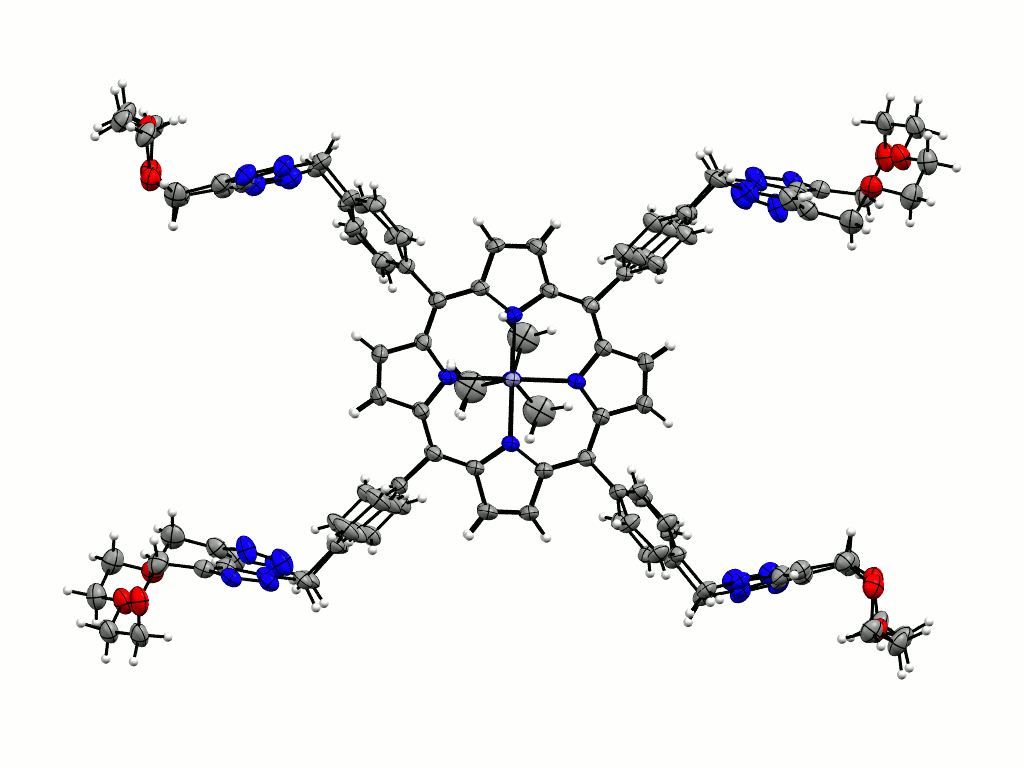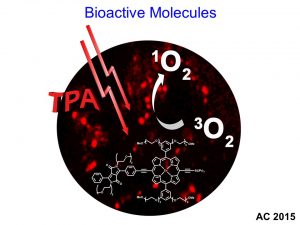-
Molecular Machines
Design and synthesis of multicomponent systems that undergo large mechanical motion triggered by light, chemical or electrochemical energy is the target of chemists working in the challenging field of artificial molecular machines. Several groups around the world have developed strategy to build such molecules based on interlocked compounds, catenanes and rotaxanes, or on non-interlocked systems. It is now of high interest to associate to the motion a specific function and a few systems have display their use for controlled-catalysis, transport, controlled-delivery, information storage. These molecular machines open new perspectives in nanomedecine, sensory device, data storage and nanomaterials. Projects on molecular machines displaying a specific task under the action of an external stimulus are currently developed in the group.
-
Molecular Containers
 Chemists have created synthetic tools to increase the complexity of the systems they construct both in terms of their architectures and of their functions. Coordination supramolecular chemistry takes advantage of metal-coordination bonds of different strength and directionality to assemble under thermodynamic equilibrium multicomponent systems of well-defined geometry. Transition metals are used to build three-dimensional architecture either as templates or as structural elements. Metalloporphyrin is an interesting building block: incorporated in cage like structure it offers several perspectives for the cage activity from host-guest chemistry to reactivity or photocontrolled-release of encapsulated species. Molecular container incorporating porphyrins are developed in our group for their dynamic and electronic properties and as active component for the reactivity performed inside the cavity.
Chemists have created synthetic tools to increase the complexity of the systems they construct both in terms of their architectures and of their functions. Coordination supramolecular chemistry takes advantage of metal-coordination bonds of different strength and directionality to assemble under thermodynamic equilibrium multicomponent systems of well-defined geometry. Transition metals are used to build three-dimensional architecture either as templates or as structural elements. Metalloporphyrin is an interesting building block: incorporated in cage like structure it offers several perspectives for the cage activity from host-guest chemistry to reactivity or photocontrolled-release of encapsulated species. Molecular container incorporating porphyrins are developed in our group for their dynamic and electronic properties and as active component for the reactivity performed inside the cavity.
-
Theranostic Molecules
 Theranostic is an emerging discipline that combines therapy with diagnosis within one system, in order to increase the success of therapy, to allow image-guided therapy and to develop personalised treatments. Photodynamic therapy (PDT) uses porphyrin derivative as photosentizer to generate cytotoxic singlet oxygen. It is used in cancer therapy and to cure various diseases such as age related macular degeneration. Magnetic resonance imaging (MRI) plays an essential role at every stage of PDT, from disease detection to therapy monitoring and outcome assessment. We are developing new bimodal molecular systems that associate two agents, one for two-photon PDT and one for MRI. These new molecules will be tested in vitro and in cellulo and in small animals in the frame of collaborations. This multidisciplinary project associates experts in chemistry, biophotonics and medical imaging.
Theranostic is an emerging discipline that combines therapy with diagnosis within one system, in order to increase the success of therapy, to allow image-guided therapy and to develop personalised treatments. Photodynamic therapy (PDT) uses porphyrin derivative as photosentizer to generate cytotoxic singlet oxygen. It is used in cancer therapy and to cure various diseases such as age related macular degeneration. Magnetic resonance imaging (MRI) plays an essential role at every stage of PDT, from disease detection to therapy monitoring and outcome assessment. We are developing new bimodal molecular systems that associate two agents, one for two-photon PDT and one for MRI. These new molecules will be tested in vitro and in cellulo and in small animals in the frame of collaborations. This multidisciplinary project associates experts in chemistry, biophotonics and medical imaging.
Keywords: Supramolecular Coordination Chemistry | Molecular Machines | Bioactives Molecules | Dynamic Molecular Cages | Photo- and Electro-Active Assemblies